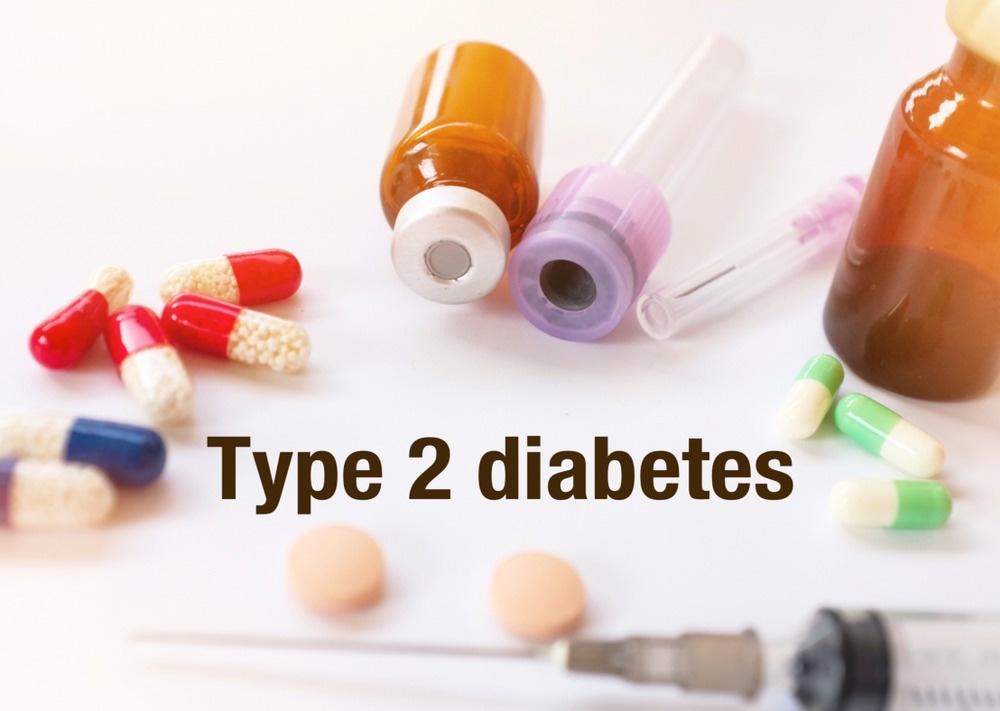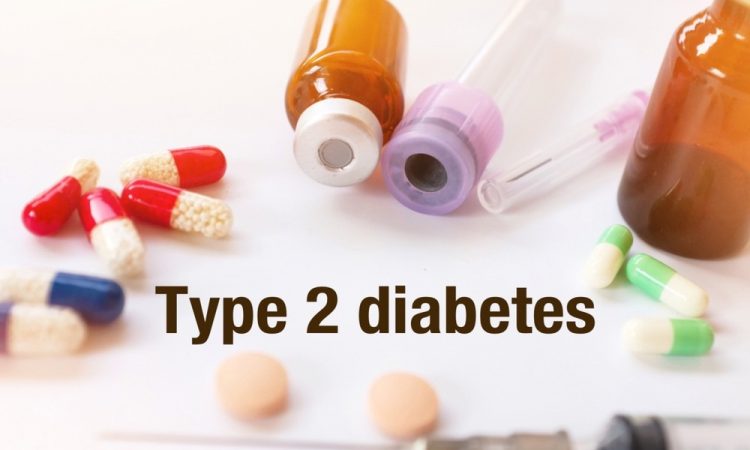In a recent study published in the Journal of Translational Medicine, researchers examined the significance of dietary lipids in the gut-brain axis of individuals with type 2 diabetes mellitus (T2DM).

Study: The roles of dietary lipids and lipidomics in gut-brain axis in type 2 diabetes mellitus. Image Credit: Primeiya/Shutterstock.com
Background
T2DM is a prevalent noncommunicable disease (NCD) characterized by systemic inflammation and dysfunction of pancreatic β-cells and/or peripheral insulin resistance. This leads to impaired glucose as well as lipid metabolism.
Various factors, including metabolic, genetic, sociodemographic, and lifestyle, are associated with an increased T2DM risk. Dietary lipids and their metabolism significantly influence the modulation of metabolism in T2DM and its related complications.
Enhancing comprehension of the functions of certain nutrients in T2DM via interactions with gut microbiota will facilitate the formulation of novel approaches for the prevention and management of T2DM.
Homeostasis and molecular regulations of dietary lipids in T2DM
T2DM is a systemic condition distinguished by insulin resistance, hyperinsulinemia, and relative insulin insufficiency.
The process of lipid metabolism encompasses the anabolic and catabolic pathways involved in the synthesis and degradation of various types of lipids, such as cholesterol, triglycerides, and fatty acids.
Specialized lipoproteins are responsible for transporting lipids to the liver from the intestine and to peripheral tissues from the liver have been identified. Nutrients, especially sugars and fatty acids, significantly impact lipid metabolism regulation.
Dietary lipids and the gut-brain axis in T2DM
Several dietary fatty acids are absorbed within the small intestine, while a subset of these fatty acids directly impacts the composition of the microbiota within the colon.
Research has demonstrated that the gut microbiota has the potential to impact lipid and glucose metabolism and may contribute to T2DM development by perturbing the equilibrium between pro- and anti-inflammatory consequences in the liver.
A saturated fatty acid (SFA)-abundant diet has the potential to negatively impact the composition of the microbiota and decrease insulin sensitivity. The consumption of a high-fat diet results in an increase in the abundance of Firmicutes and a reduction in the abundance of Bacteroidetes.
High-fat diet
There is a correlation between high-fat diets, a decrease in Bifidobacterium species, and an increase in plasma lipopolysaccharide (LPS) concentration.
Similarly, it has been noted that the proliferation of Desulfovibrio bacteria exhibits opportunistic pathogenicity and generates LPS among mice subjected to high-fat diets. LPS is transported into the systemic circulation, leading to the subsequent release of interleukins.
Antibodies eBook

High-fat diets can also interfere with the proper functioning of the intestinal barrier, thereby enabling the translocation of LPS. Metabolic endotoxemia is a medical condition that can reduce pancreatic β-cell function, T2DM, and insulin resistance.
Studies have also found a correlation between high-fat diets and elevated LPS levels among humans.
Saturated fatty acids
The consumption of SFAs has been linked to an elevation in non-commensal bacteria, specifically Proteobacteria and Firmicutes. As well as a disruption in the intestinal barrier function, a reduction in gut microbiota diversity, a decrease in butyrate-producing bacteria, thinning of the mucus layer, chronic inflammation, and T2DM onset.
Animal models have revealed that consuming a high-fat diet leads to an increase in Firmicutes and a decrease in Bacteroidetes within the gut microbiota. This condition is linked to insulin resistance due to intestinal inflammation.
Omega-3 fatty acids
Omega 3 Fatty Acids can facilitate the prevention of insulin resistance and T2DM. This is achieved through the augmentation of gut microbiota diversity, reduction of LPS and proinflammatory cytokines, and augmentation of short-chain fatty acid (SCFA) production.
Omega-3 fatty acids can also impede proinflammatory cytokine production in human blood monocytes. Additionally, they can mitigate intestinal inflammation. Omega 3 fatty acid administration in Salmonella-infected mice resulted in an increase in SFA levels, modification of the gut microbiota, and reinforcement of resistance of the host to pathogens.
Nutritional strategies modulating gut microbiota: omega 3 fatty acids
A significant correlation exists between increased consumption of fish and seafood and decreased T2DM risk.
SFAs have been shown to enhance insulin sensitivity and signaling. This effect is attributed to their therapeutic properties in reducing systemic inflammation and endotoxemia, achieved by reducing intestinal permeability.
Furthermore, SCFA increases glucose uptake in skeletal muscle and adipose tissue by upregulating GLUT4 expression, which is mediated by adenosine monophosphate kinase (AMPK) activation.
Nutritional strategies modulating gut microbiota: dietary sterols
The host's health is significantly impacted by metabolites generated by the gut microbiota during the conversion of unabsorbed sterols, such as plant sterols and cholesterol.
These metabolites have a notable influence on T2DM and gut microbiota modulation. The findings suggest that plant sterols have a suppressive effect on the biosynthesis of certain lipid molecules, including coprostanol, while concurrently promoting SCFA production.
Moreover, it is widely recognized that coprostanol, a type of cholesterol metabolite, exerts an impact on both the gut microbiota as well as glucose homeostasis. Studies also indicate that certain sterols possess the potential to enhance glucose homeostasis and mitigate the likelihood of T2DM by regulating gut microbiota via lipidomics.
Conclusion
The study findings showed that dietary lipids significantly impact glucose homeostasis, as well as T2DM onset and advancement.
Studies have noted that lipid profiles in T2DM may be influenced by gut microbiota since the gut microbiota are altered among T2Dm patients.
The researchers believe that conducting further investigations on various dietary constituents through diverse model organisms and clinical trials with varying dosages and durations would facilitate the identification of potential associations.
- Ağagündüz, D. et al. (2023) "The roles of dietary lipids and lipidomics in gut-brain axis in type 2 diabetes mellitus", Journal of Translational Medicine, 21(1). doi: 10.1186/s12967-023-04088-5. https://translational-medicine.biomedcentral.com/articles/10.1186/s12967-023-04088-5
Posted in: Medical Science News | Medical Research News | Medical Condition News | Healthcare News
Tags: Adenosine, Adipose, Anti-Inflammatory, Bacteria, Blood, Brain, Cell, Cholesterol, Chronic, Cytokine, Cytokines, Diabetes, Diabetes Mellitus, Diet, Fatty Acids, Fish, Genetic, Glucose, Glucose Metabolism, Gut-Brain Axis, Hyperinsulinemia, Inflammation, Insulin, Insulin Resistance, Kinase, Lipidomics, Lipids, Liver, Medicine, Metabolism, Metabolite, Metabolites, Model Organisms, Muscle, Nutrients, Proliferation, Research, Salmonella, Small Intestine, Type 2 Diabetes

Written by
Bhavana Kunkalikar
Bhavana Kunkalikar is a medical writer based in Goa, India. Her academic background is in Pharmaceutical sciences and she holds a Bachelor's degree in Pharmacy. Her educational background allowed her to foster an interest in anatomical and physiological sciences. Her college project work based on ‘The manifestations and causes of sickle cell anemia’ formed the stepping stone to a life-long fascination with human pathophysiology.
Source: Read Full Article
